|
Joseph Higham's Band
Instrument Factory
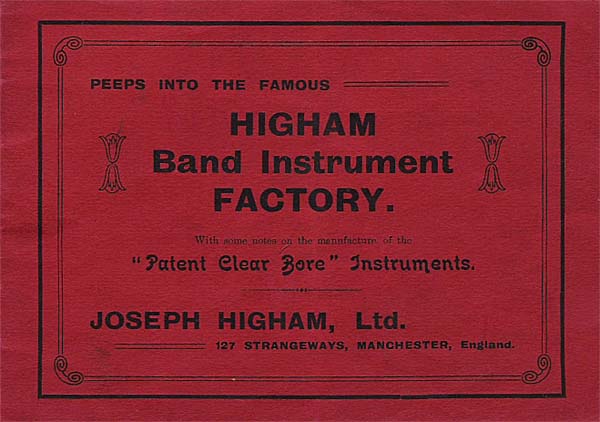 (The illustrations on
this page come from the document "Peeps into the
Famous Higham Band Instrument Factory" provided by
Gary Newborough.)
Joseph Higham
established his musical instrument factory in
1842. Entries in the Slaters Directory of
Manchester and Salford describe the company as, "wholesale
brass musical instrument makers to the trade and
for export, electroplaters and gilders."
Within ten years of the company's foundation it was
supplying musical instruments to the British Army
and later they added the British Navy to their list
of customers. For much of the time Higham's
factory was located at 127 Great Ducie Street just
across the road from the Assize Courts and
Strangeways Prison.
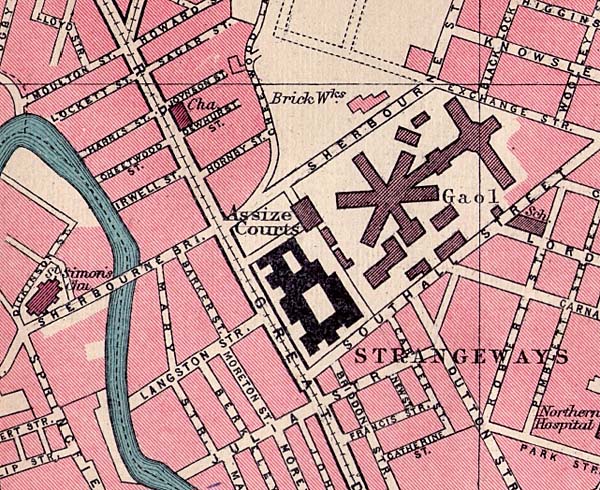 However, according
to the various Manchester and Salford
Directories, this wasn't always the case.
In 1850 Joseph Higham, musical instrument maker,
had premises at 73 Chapel Street in
Salford.
It was at this phase of the company's history that it played an interesting role in the formation of one of the country's iconic brass bands. In 1855 a band formed in the Yorkshire village of Queenshead was experiencing difficult times. The Halifax Courier newspaper reported in September of that year that: "John Foster & Son, having lately become acquainted with the depressed state of the band determined to make an effort themselves to raise it up again. Accordingly they have purchased from the eminent maker, Mr. Joseph Higham, of Manchester a new set of instruments which have this week been delivered to the band, which in future is to be denominated Black Dyke Mills Band." By 1863 the Higham's address was 2 Victoria Terrace, Victoria Street and, interestingly, there is also a listing for a Thomas Higham who is selling musical instruments at 76 Bridge Street just off Deansgate. Perhaps this is a retail outlet for the company. By 1879, the address for Joseph Higham is 127 & 131 Great Ducie Street but they still had the premises on Victoria Street. In 1883 ownership of the company passed to Higham's son-in-law Peter Robinson. By 1895 there
is no longer any mention of the Victoria
Street address. Higham's held a number
of important patents and were major
producers of quality instruments. It
is said that they employed over 90 craftsmen
and in the first 51 years of business they
produced 46,000 instruments.
Below you will
find the rest of Higham's "Peek" into their
factory.
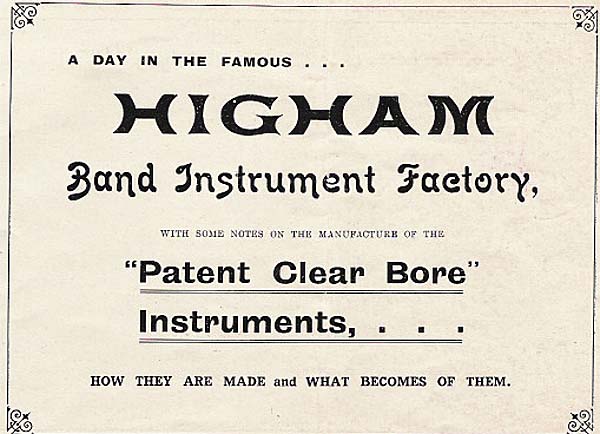 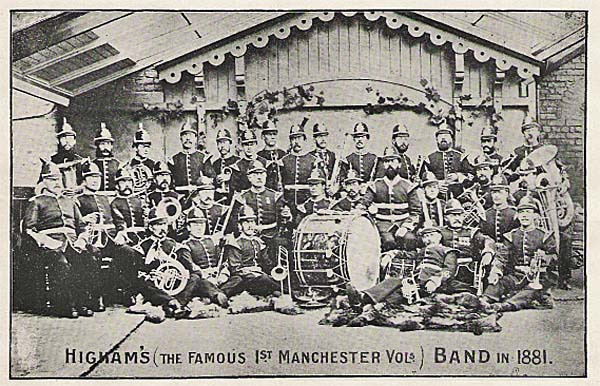 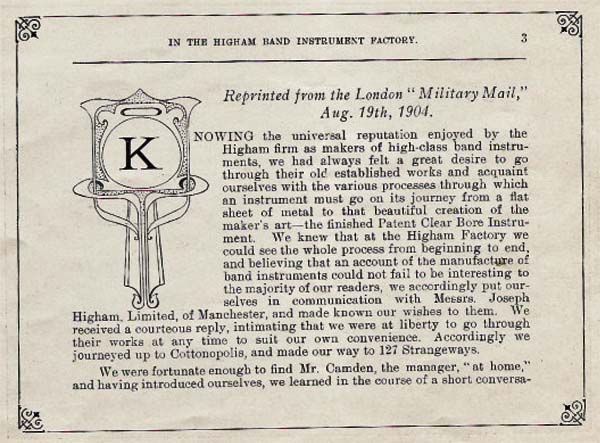  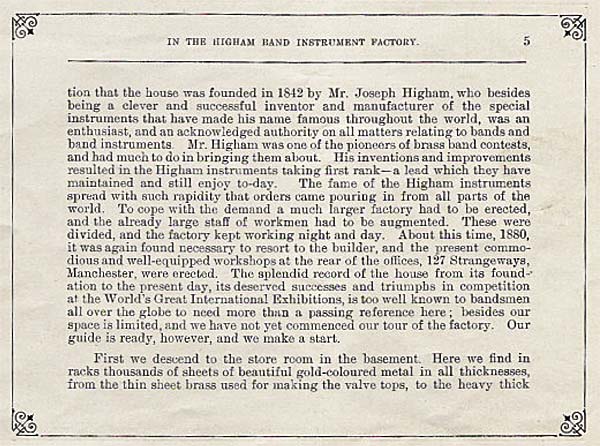 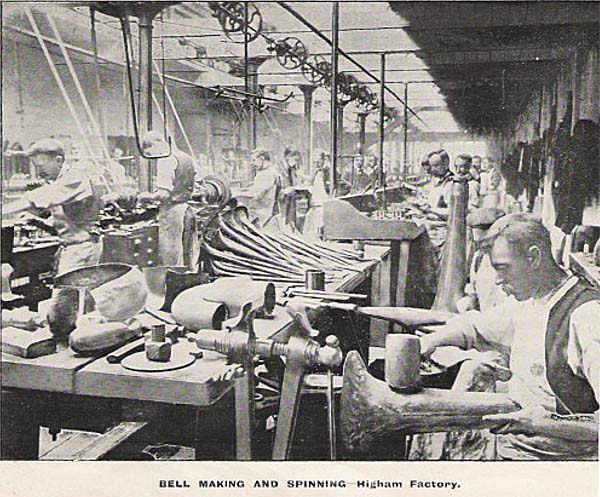 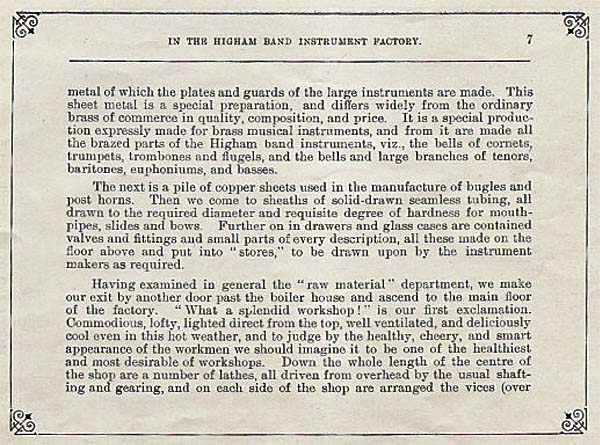 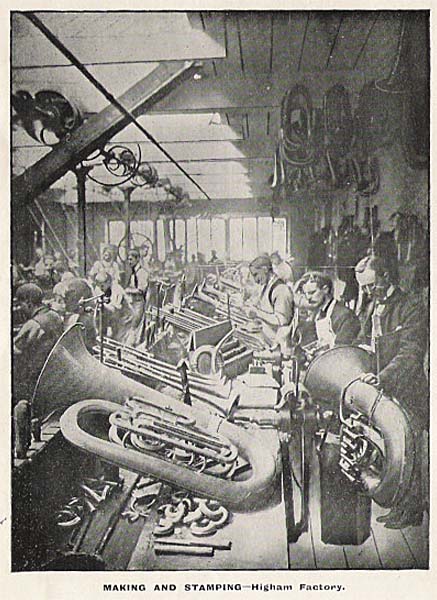 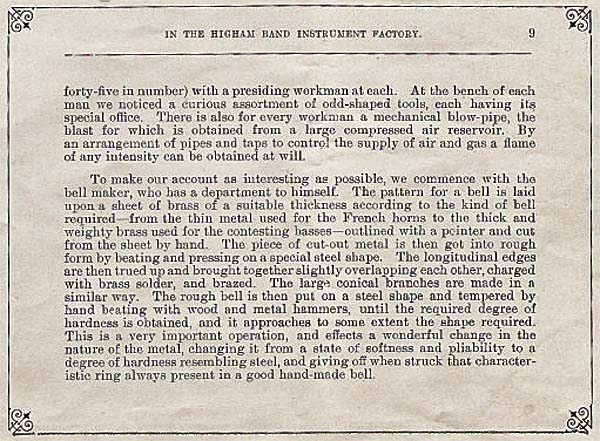 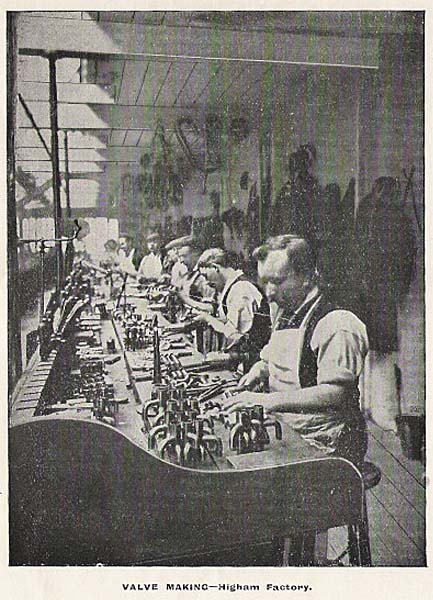 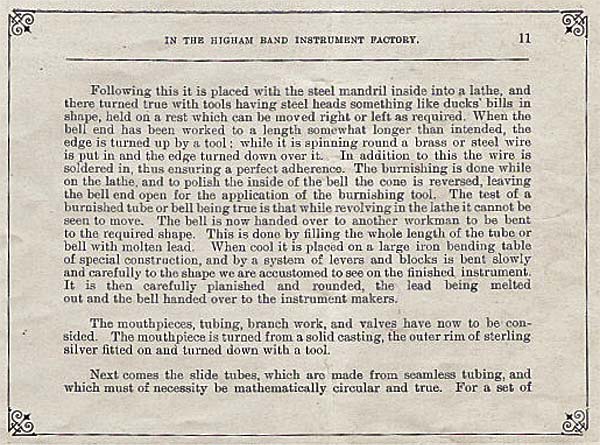 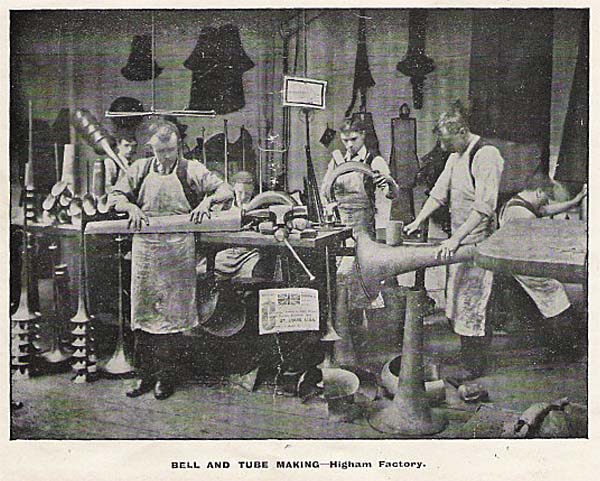  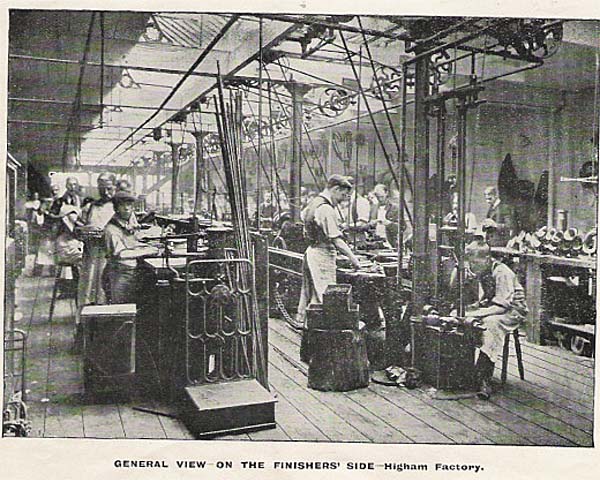 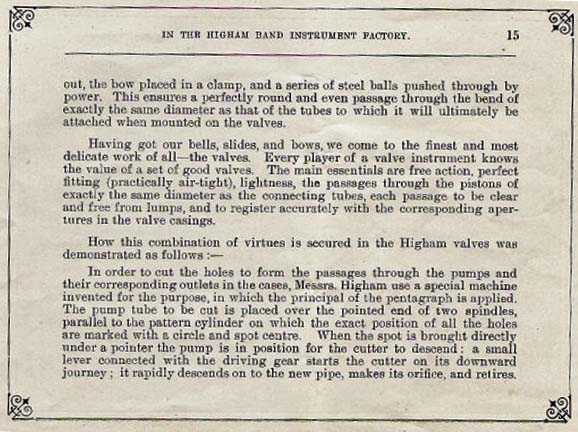  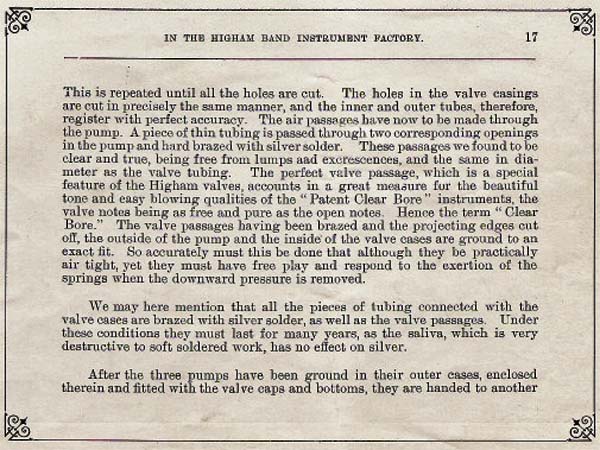 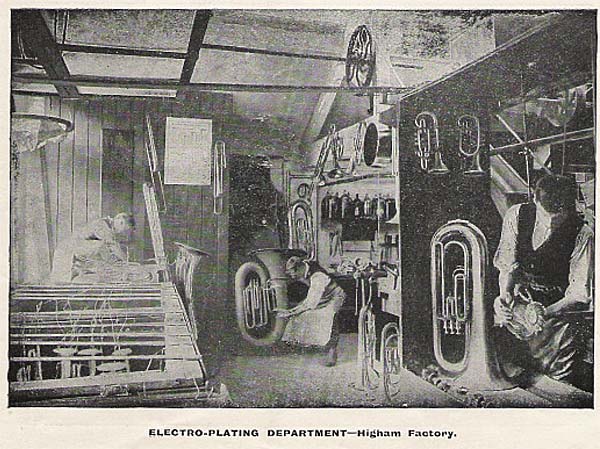 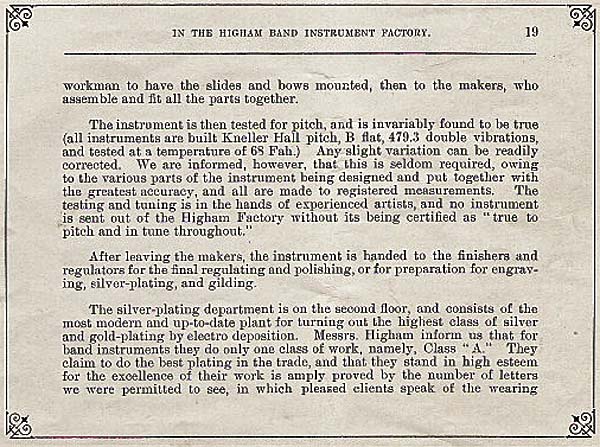 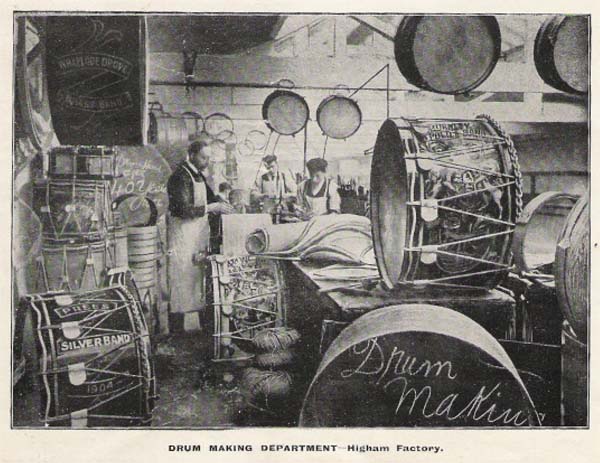 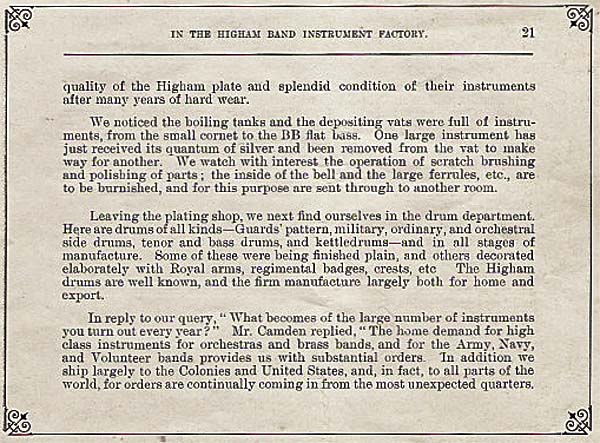 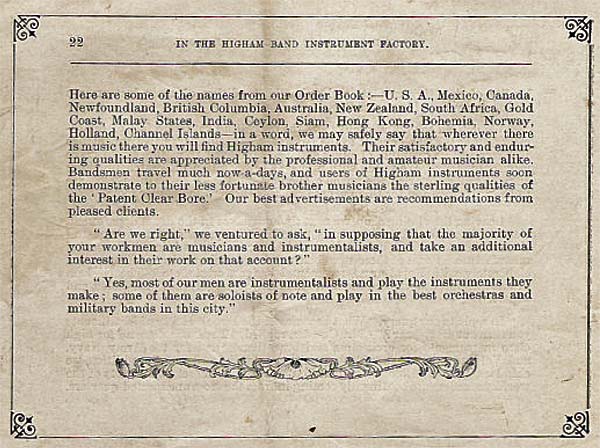 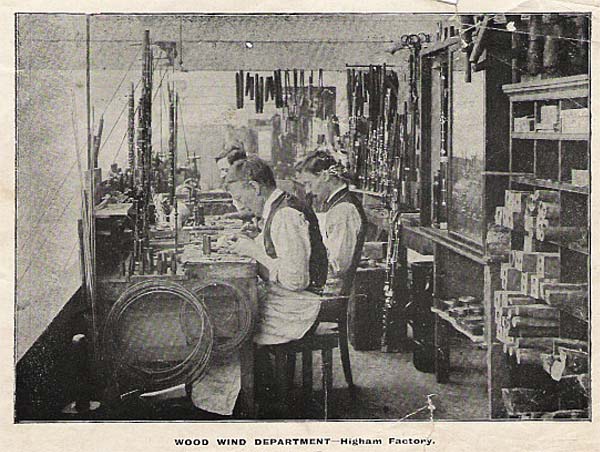 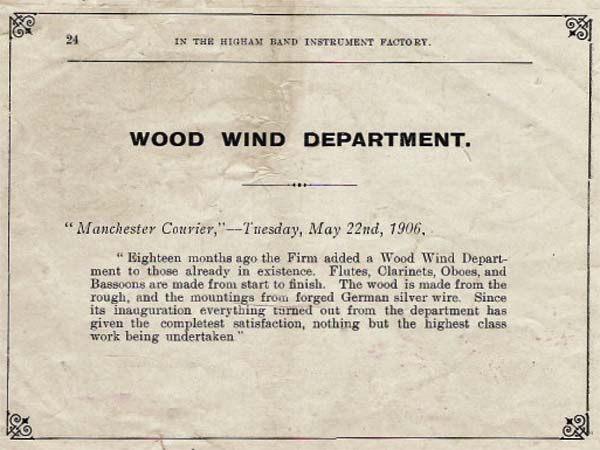 ******************* I
received a message from Klaus Langer, a restorer of
organs and harmoniums, regarding Highams. He
pointed out that he had, "...finished
restoration work on a pressure reed organ some
time ago. On the back of its wind chest it is
engraved 'Thos. Higham, 73 Bridge Street,
Manchester'. This eye-catching instrument of
good craftmenship and sound may be built around
1880. In Gellerman's 'Reed Organ Atlas' Higham
is mentioned as "Harmonium Maker" during 1878 to
1883." Below is the organ that
Klaus restored.
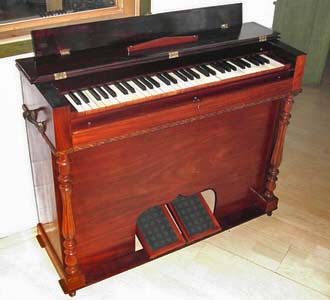 |
Close Window